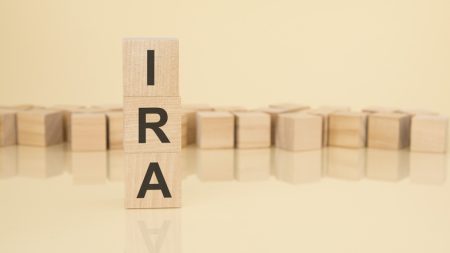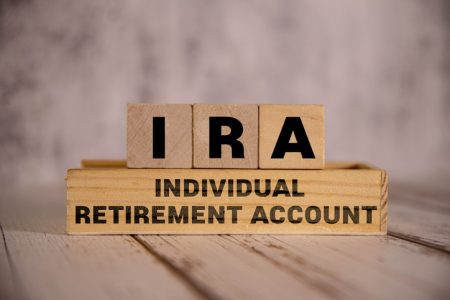When it comes to managing retirement income, taxes can be one of your biggest – and most overlooked – expenses. Many retirees wonder whether converting their savings to a Roth IRA can help satisfy their required minimum distributions (RMDs) and reduce their tax burden. It is a smart question, but it is also a common point of confusion. While both involve moving money out of your retirement accounts, the IRS treats Roth conversions and RMDs very differently.
Ask a financial advisor about the best retirement planning strategy for you based on your long-term goals.
How RMDs Work
The IRS determines the amount you must withdraw each year based on your account balance and life expectancy. Failure to take an RMD can lead to steep penalties, currently 25% of the amount you should have withdrawn.
RMDs ensure that the government eventually collects taxes on the money you set aside in pre-tax retirement accounts. Because these accounts grow tax-deferred, the IRS does not collect income tax until you withdraw funds. RMDs prevent retirees from keeping money in these accounts indefinitely and avoiding taxation altogether.
You must generally take RMDs by December 31 each year. However, you can delay your first required distribution until April 1 of the following year. Keep in mind that delaying your first withdrawal means you will take two RMDs in one calendar year. This could potentially push you into a higher tax bracket.
Each account type also has its own rules. For example, you must calculate RMDs separately for IRAs, but you can take the total amount from one IRA if you prefer. Meanwhile, 401(k)s require distributions from each account individually.
The money you withdraw through RMDs is ordinary income in the year you take it. This, in turn, can increase your taxable income. This can possibly impact your Social Security taxes or Medicare premiums. Instead, some retirees choose to take partial distributions throughout the year to manage cash flow and tax impact. Others time withdrawals based on market conditions.
Planning when and how to take your RMDs strategically can help minimize these tax consequences.
Why a Roth Conversion Does Not Qualify as an RMD
A Roth conversion involves transferring funds from a traditional IRA or another tax-deferred account into a Roth IRA. When you do this, you pay income tax on the converted amount in the year of the transfer. The money then grows tax-free with the option for withdrawals during retirement.
Required minimum distributions work differently. The IRS requires these mandatory withdrawals certain accounts to ensure you pay taxes on pre-tax savings. Once you are subject to RMDs, the IRS requires that you take your full RMD before doing any Roth conversion.
You cannot convert the RMD amount itself; you must withdraw and pay tax on it first. Only funds remaining in the account after the RMD are satisfied and can be converted.
While RMDs increase taxable income without much flexibility, Roth conversions give you more control. They allow you to decide when to pay taxes, potentially reducing future RMD obligations.
By converting funds before RMDs begin or during lower-income years, retirees can build a source of tax-free income that is not subject to future withdrawal requirements.
Can an RMD Be Converted to a Roth IRA?

Once a distribution becomes a required minimum distribution, you may not convert it to a Roth IRA. The IRS explicitly prohibits using RMD funds for Roth conversions.
This means that once you withdraw your RMD from a traditional IRA or other qualified account, that money becomes taxable income. You cannot re-deposit it into a Roth IRA as part of a conversion.
If you want to convert funds to a Roth IRA in a year when you must also take an RMD, you need to take the RMD first. Only the remaining balance in the account after that withdrawal is eligible for conversion. For example, say your RMD for the year is $15,000 and you want to convert $30,000 to a Roth IRA. You must first take the $15,000 RMD and pay taxes on it.
While RMDs themselves cannot be converted, strategic planning can still reduce their long-term tax impact. For example, you may convert portions of your traditional IRA to a Roth IRA before RMDs begin. You typically do this between retirement and age 73 to shrink your future account balance while lowering the size of future RMDs.
This approach spreads taxes over several years. It can potentially keep you in a lower tax bracket while providing greater flexibility later in retirement.
Other Options for Reinvesting an RMD You Don’t Need
If you do not rely on your RMD for living expenses, there are several smart ways to repurpose that money.
While you cannot return it to a tax-deferred account, you can still use the funds to grow wealth, reduce future taxes or support long-term financial goals. The key is to move the money intentionally so it continues working for you.
Pay Down Debt or Build Cash Reserves
Using RMD funds to pay off high-interest debt or boost your emergency savings can provide peace of mind and financial flexibility. Reducing liabilities or maintaining a healthy cash cushion can strengthen your long-term financial stability. This is especially the case in retirement.
Invest in a Taxable Brokerage Account
You can use your RMD to make different types of investments. These could include stocks, bonds, mutual funds or ETFs, all through a regular investment account. Though you will still pay taxes on dividends and capital gains, this approach allows for compounding rather than keeping idle cash. Over time, this can help offset the taxes you pay on your RMD.
Contribute to a Spouse’s IRA
If your spouse is under the contribution limit and has earned income, you can use your RMD to fund their IRA. This can be either a traditional or Roth IRA, depending on your eligibility. This strategy will help you keep more money growing in a tax-advantaged account while strengthening your household’s overall retirement plan.
Make a Qualified Charitable Distribution (QCD)
If you are age 70½ or older, you can direct up to $100,000 annually from your IRA to a qualified charity. This move counts toward your RMD but is not included in your taxable income. It offers a powerful way to support causes you care about while reducing your tax bill.
An RMD does not have to be a burden but instead, an opportunity to strengthen your financial position. Whether you invest the money, give it away strategically or shore up your reserves, reinvesting your RMD thoughtfully can help you maintain control of your retirement income while aligning with your long-term retirement goals.
Bottom Line

A Roth conversion and a required minimum distribution may both involve moving money out of your retirement accounts. However, they serve very different purposes under IRS rules. An RMD is a mandatory, taxable withdrawal once you reach a certain age, while a Roth conversion is a voluntary move that allows you to create future tax-free income. You cannot use an RMD to fund a Roth conversion, but you can plan ahead to reduce the tax impact of future RMDs through careful timing and proactive conversions.
Tips for Retirement Planning
- A financial advisor can help you with your long-term planning and help prepare your finances for retirement. Finding a financial advisor doesn’t have to be hard. SmartAsset’s free tool matches you with vetted financial advisors who serve your area, and you can have a free introductory call with your advisor matches to decide which one you feel is right for you. If you’re ready to find an advisor who can help you achieve your financial goals, get started now.
- Utilizing a retirement calculator, or similar tool, can help you estimate how much money you might need to save for retirement.
Read the full article here












